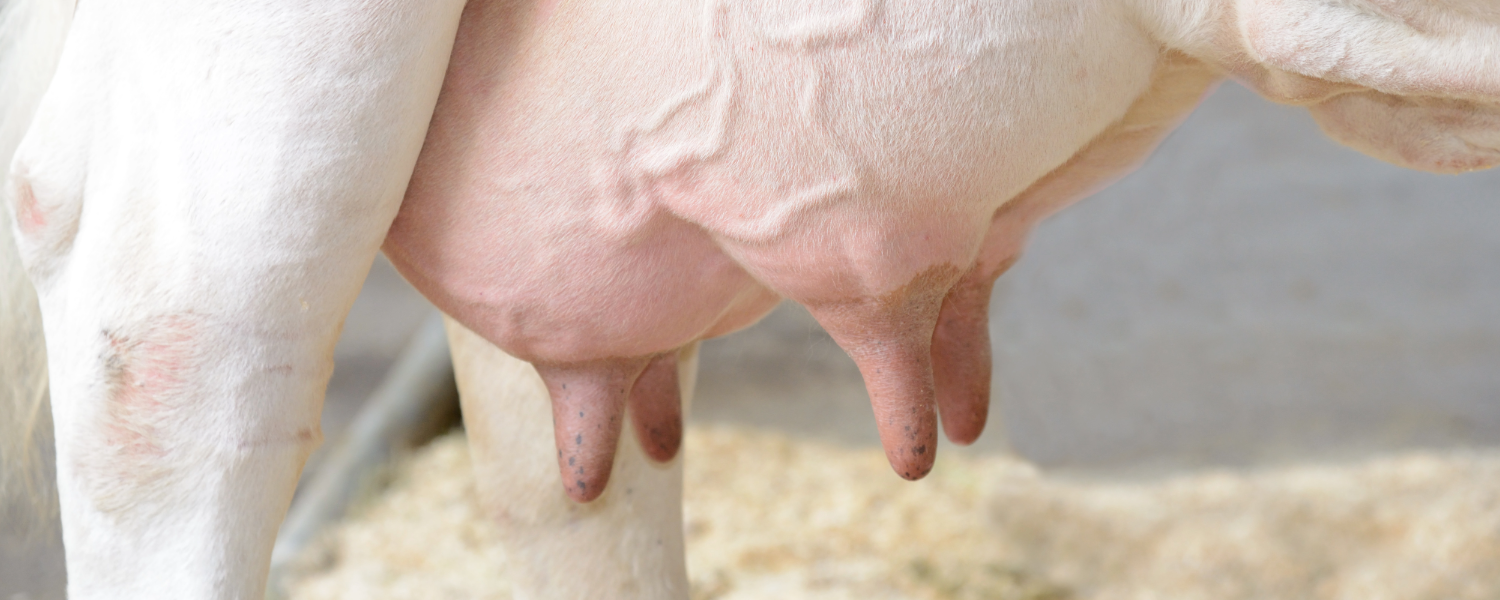The cause of teat end callus is due to mechanical stress during the milking process. During milking, the teats are exposed to the force of vacuum and the Liner. The duration and method of this affects the condition of the teat. A good pre-treatment can reduce the stress on the teat.
Pre-treatment of milking is important for good stimulation of the teats, which gets the milk flow going. This reduces blind milking and shortens the total milking time. The waiting time between pre-blasting and connecting the milking cluster is also important. The ideal waiting time is 50 to 70 seconds (Anonymous, Points of attention for milking technology, 2024). This has a positive effect on the milking speed and the complete milking of the udder. On farms with a Milking robot, is often scored better on teat condition because the milk cups are removed every quarter (Hylkema, 2020). This prevents blind milking.
Classification system Stage of teat end callus

Figure 1, Teat end callus classification system (Anonymous, Teat end callus classification system, 2024)
Causes of teat end callus
There are several causes of teat end callus. Namely:
- Excessive pressure from the Liner on the teat tip. Rapid opening and closing movement of the Liner increases the pressure on the teat.
- A pointed teat end and long teat have a greater chance of teat end callus. This has to do with breeding.
- Too long milking time and blind milking, which exposes the teat to pressure during milking for longer.
- Vacuum under the teat too high. Due to a vacuum that is too high in the head of the Liner the creeps Liner rise and swelling occurs on the teat.
- A mismatch Liner. If the shaft diameter of the Liner too large for the teat, a head vacuum that is too high will occur. This will put more pressure on the teat.
- A worn out Liner can also affect the teat condition.
Implications
- Due to the callus, the quarter may not be milked out properly and therefore there is a chance of an increased cell count or mastitis. In addition, the callus is a place where dirt and mastitis germs can nest and enter the udder (Hylkema, 2020).
- Due to teat end callus, too little keratin is produced, which causes Teat opening of the teat is not properly closed (Hylkema, 2020). Mastitis pathogens can therefore more easily enter the udder.
Conclusion
Ensure that the milking machine is properly adjusted or Milking robot, to prevent teat end callusing. A wet measurement can be used to check whether the settings are correct and the milking process is running smoothly.
Care in the Milking parlour for a proper pre-treatment with sufficient stimulation. This consists of cleaning the teat, pre-blasting and a waiting period of 50-70 seconds until the milking cluster is connected. Provide the teat with a dip after milking for the care of the teat and the closing of the Teat opening. at An Milking robot, it is important that the pre-treatment is long and intensive enough to provide sufficient stimulation to get the milk flowing.
Bibliography
Anonymous. (2024, April 20). Points of attention in milking technology. GD animal health: https://www.gddiergezondheid.nl/-/media/Files/UGA-en-FIT-Instructiekaarten/UGA-aandachtspunten-melk-techniek-speenconditie-pdf
Anonymous. (2024, April 20). Milking technology. GD animal health: https://www.gddiergezondheid.nl/nl/Diergezondheid/Management/Uiergezondheid/Melken/Melktechniek#:~:text=De%20voorbehandeling%20is%20belangrijk%20voor,voorkeur%20%C3%A9%C3%A9n%20doek%20per%20koe.
Anonymous. (2024, April 20). Teat end callus Classification system. Wageningen University Research: https://edepot.wur.nl/42050
Anonymous. (n.d.). Teats tell you a lot about the milking machine. April 21, 2024, from GD animal health: https://www.gddiergezondheid.nl/diergezondheid/management/uiergezondheid/melken/spenen-melkmachine
Hylkema, I. (2020, October). Teat tip callus. Retrieved from Wageningen University Research: https://edepot.wur.nl/533700
